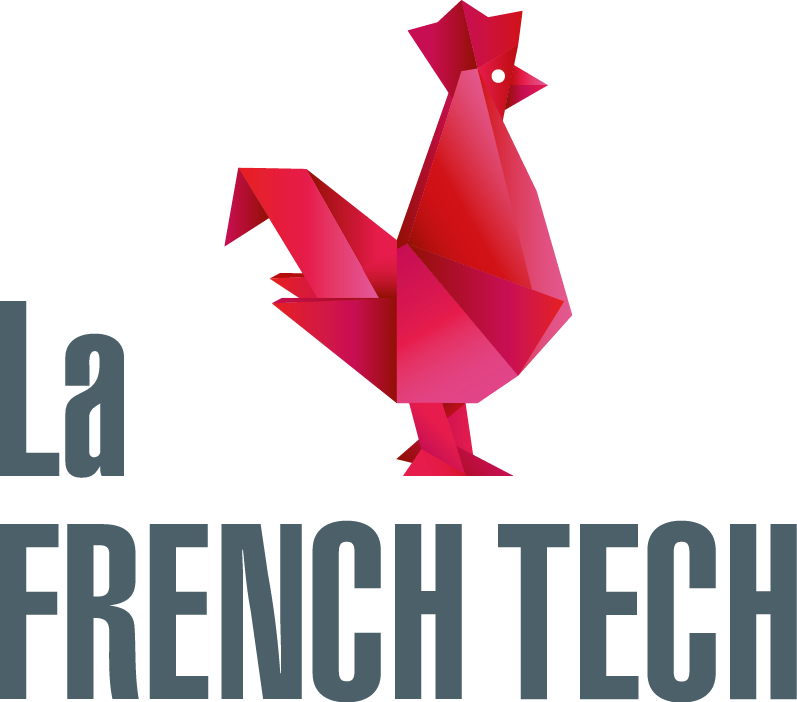Does Factor Investing always mean diversification?
What are the challenges when combining ESG and Smart Beta? To find the answers to these and more questions, we asked Vitali Kalesnik, PhD in Economics from UCLA and Partner, Head of Research for Europe at Research Affiliates (RAFI).
Diversification benefits of Factor Investing tend to be overstated
Quantilia [Guillaume Subias]: Dear Vitali, there are topics I know you have done extensive research on. So, let’s go technical: it is common belief that Factor Investing means diversification. You have a slightly different opinion though and showed that the diversification benefits of Factor Investing tend to be overstated. Can you explain?
Research Affiliates [Vitali Kalesnik]: Factor investing is attractive to many investors due to its systematic nature, transparency, and generally low management fees. At the same time, factor investing products are often associated with aggressive marketing. Marketers are very happy to tout the products using the backtested performance as evidence. High returns and low risks due to diversification between multiple factors are often emphasized. Unfortunately, the live investor experience has often fallen short of these rosy promises. In our recent research titled “Alice’s Adventures in Factorland: Three Blunders That Plague Factor Investing,” we examine why recent investor experience has been disappointing. The three largest problems we identified are:
- Exaggerated expectations due to aggressive data mining by practitioners and academics alike.
- Factor returns are very non-normally distributed, which makes factors prone to crashes and prolonged periods of underperformance.
- Diversification benefits are often overstated. Because of the non-normality of factor performance and the spikes in correlations, even well-diversified portfolios of factors exhibit the same non-normality patterns characteristic of individual factors.
In order to benefit from factor investing, investors need to discount their expectations by at least half of the historical backtests and to prepare for potentially sharp drawdowns and prolonged periods of underperformance.
Robustness of factors in Factor Investing matters
Quantilia: What are the most important things to look at when an Investment Manager wishes to invest in Factors? Stability over time? Timing of the factor returns?
Research Affiliates: Data mining in academic and practitioner communities alike is a big concern in selecting robust factors. We use the following three-step procedure to identify robust factors:
- The factor needs to be extensively studied in academic publications. A lack of academic attention signals an inadequacy of the factor to benefit investors when implemented on a large scale.
- The factor needs to be robust to perturbations in definitions. For example, value could be defined as P/B, P/E, or P/Sales as well as many other ratios of stock price to stock’s share of the accounting variable. All of these measures lead to portfolios with roughly similar risk/return characteristics, which signals robustness of the value factor.
- The factor needs to be robust in multiple geographies. If the factor delivers value-add only in one geographical region, it is more likely to be a product of data mining.
With this framework, we find that value, low beta, and momentum factors are generally quite robust net of transaction costs. (The consideration of transaction costs is another important aspect in determining factor robustness in live portfolios and one which needs to be tackled separately.)
Interestingly, some of the popular factors, such as size (or small cap), are not very robust based on this framework. The size premium is not very attractive outside the US market. It is not very robust to perturbations in definitions. Even in the United States where the small-cap premium was initially documented in academic studies, a significant portion of the simulated portfolio return could be attributed to the upward bias in the delisting returns present in the common historical stock-return databases. Given this, we do not believe that investors will benefit from the small-cap premium.
Another popular factor that has robustness problems is quality. Many of the dimensions of quality, such as leverage, earnings growth, or earnings stability, that are commonly used in the numerous quality index products are not associated with systematic premia. Having said that, some evidence indicates that financial discipline–related measures, such as conservative issuance, conservative accruals practices, conservative investments, and high profitability, are associated with systematic premia.
Quantilia: Research Affiliates not only develops investment strategies, but I believe you are also able to support your clients with Portfolio Construction techniques. What are the latest trends in this area in order to create value for investors?
Research Affiliates: If capturing the factor premia is uncertain and dependent in any given period on the vagaries of the market, the transaction costs associated with factor strategies are a known and real impact on return. Day after day they eat up strategy performance. Investors need to start paying a lot more attention to transaction costs. We at Research Affiliates have replicated a number of smart beta/factor investing indices that publish their methodologies. We discovered that the majority of these strategies are likely to experience 30 to 50 basis points of transaction costs per year. The worst outliers may have transactions costs on the order of 100 to 200 basis points. Will there be value add for investors in these strategies after these transaction costs? Highly unlikely!
Why such high transaction costs? Factor investing strategies need to trade to maintain their factor characteristics. If a strategy trades a lot, the strategy transaction costs are going to be high. If, in addition, the strategy trades a lot in illiquid stocks, the strategy transaction costs are going to be very high! The level of turnover is a direct measure of how much a strategy trades and the weighted average market capitalization of the strategy is a good indicator of the liquidity of the stocks the strategy invests in. Investors should pay attention to those measures when selecting strategies.
The more-sophisticated indices employ a number of techniques to improve their transaction cost characteristics: weighting companies based on fundamental measures of company size; banding, which introduces a margin for a stock characteristic in order to reduce the amount of unnecessary turnover; and momentum stock filtering, which uses higher-frequency signals such as momentum, not to initiate trades but to slow down unnecessary trading suggested by other signals. These are just a few techniques that can reduce transaction costs.
ESG and Factor Investing
Quantilia: ESG strategies have a good place amongst RAFI’s products. What are the challenges when combining ESG and Smart Beta? Does RAFI have a specific approach? Is there any proof of better performance of ESG portfolios?
Research Affiliates: The main challenge with ESG investing is a lack of consistent evidence that ESG-related metrics are associated with better performance characteristics. Some evidence exists that several sin-related measures are associated with better performance due to their high-quality characteristics (e.g., high in profitability and conservative investment). But because these companies are commonly penalized (i.e., down-weighted or totally removed) in ESG investment strategies, they may be associated with worse performance. The research around ESG is complicated by the fact there is no commonly accepted definition of ESG. Further compounding the problem is that data which measures how companies score on various dimensions of ESG are only very recently available.
The approach we adopt for RAFI ESG aims to achieve the dual objectives of social responsibility and long-horizon outperformance. It combines the following three elements:
- traditional environmental-, social-, and governance-related signals
- supplemented by financial discipline metrics (conservative issuance, conservative accounting practice, conservative investments, and higher profitability) and diversity measures, which show historical correlation with future company profitability and with evidence of a long-term premium (for the financial discipline)
- combined with fundamental indexation, a time-proven source of excess return as a result of its disciplined rebalancing nature.
Quantilia: At Quantilia, we help institutional investors to navigate in the complex world of investments, offering custom-made tools and pertinent data to help them make important portfolio management decisions. Research Affiliates also offers several tools to its licensees. One I like in particular is the expected return tool. Could you say a word about your methodology?
Research Affiliates: Sharing our insights is one of the core tenets of Research Affiliates’ philosophy and a key part of our mission. We strive to fill gaps in the marketplace when we think our insights will be useful to investors. We saw such a gap with respect to long-term capital market return expectations by asset class. A desire to fill this gap led us to develop and make freely available on our website the Asset Allocation Interactive tool. For the same reason, we also developed and made freely available the Smart Beta Interactive tool for factors and smart beta strategies.
The Asset Allocation Interactive tool provides long-term return estimates for the following asset classes:
- Domestic & Foreign Cash: Short-term cash instruments
- Fixed Income
- Equity
- Real Estate Investment Trusts (REITS)
- Commodities
We have a transparent methodology to generate return estimates using a building-blocks model that combines yield, growth, and valuation change estimates for each of the asset classes.The Smart Beta Interactive tool provides our excess return and risk estimates for the more-popular smart beta strategies as well as for the most popular academic factors. The expected returns are based on 1) structural alpha (average historical strategy or factor premium, net of change in valuation) and 2) a valuation component (measures how expensive the strategy is priced relative to its own history). We provide all the methodology details on both tools for anyone willing to take a deeper dive. Both tools have a host of other relevant information such as historical data and trading cost estimates that can educate and benefit investors’ decision making. We would be delighted for anyone to visit the Research Affiliates website and use these tools.
About Research Affiliates
Research Affiliates is committed to be the preeminent source of insights and products that transform the global investment community for the benefit of investors. Research Affiliates’ investment strategies are built on a strong research base. The firm delivers investment solutions in partnership with some of the world’s leading financial institutions through their offerings of mutual funds, ETFs, separately managed accounts, and/or commingled accounts based on Research Affiliates’ strategies.
Research Affiliates, based in Newport Beach, California, was founded in 2002 by Robert Arnott as a research-intensive asset management firm that focuses on innovative products. The team at Research Affiliates explores novel approaches to active asset allocation, optimal portfolio construction, efficient forms of indexation, and other quantitative strategies. Research Affiliates is well known for being an established leader in smart beta, introducing the RAFI™ Fundamental Index™ in 2005. As of March 31, 2019, US$182 billion in assets are managed worldwide using investment strategies developed by Research Affiliates.
About Vitali Kalesnik
Vitali Kalesnik is a partner and senior member of Research Affiliates’ investment team. He represents Research Affiliates Global (Europe) Advisors, Ltd, in London, where he leads research and business strategy in the European region. Previously, Vitali led the Equity Research team and continues to perform general equity-related research. Articles he has co-authored with others have been recognized with two Graham and Dodd Scroll Awards, a Financial Analysts Journal Readers’ Choice Award, a William F. Sharpe Indexing Achievement Award, and a Bernstein Fabozzi/Jacobs Levy Award. His research strengthens and expands Research Affiliates’ products—in particular, RAFI™ Fundamental Index™ strategies—and supports the firm’s global tactical asset allocation products. Vitali earned his PhD in economics from the University of California, Los Angeles, where he was a winner of the UCLA Graduate Division Fellowship for 2001–2005. He speaks fluent English, Russian, and French.


